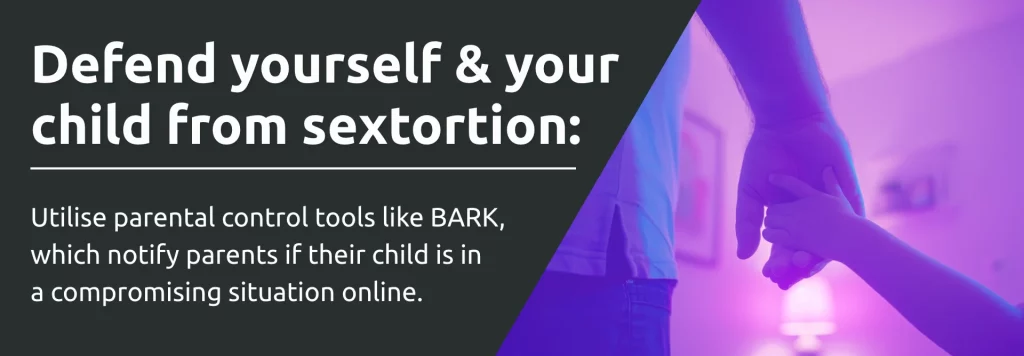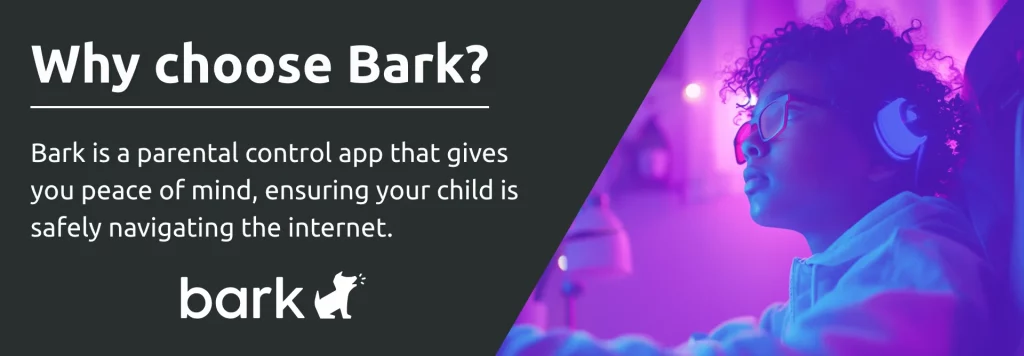
By Thabo Peyi
October 10th, 2024
5 min read
The Dark Reality of The Digital Age

Technology and social media have revolutionised the way we interact with one another and have significantly impacted how people parent their children. The methods parents use to stay in touch with their children, as well as to keep them entertained throughout the day, have changed drastically compared to previous generations due to the rise of technological advancements, social media, and other messaging platforms.
However, despite the positive contributions of technology, there is a darker side that requires attention – sextortion. It is crucial to raise awareness of this cyber security threat.
Related
Categories
All
Entertainment
Self Help
Tech News
Company Updates
Community
Social Media

What is sextortion ?
Sextortion occurs when someone coerces you into sending explicit content under false pretenses and then threatens to leak the material if you do not comply with their demands, which often involve paying them money.
With the rise of social media, extortionists frequently target innocent and unsuspecting victims, who are seen as easy prey. When it comes to sextortion, anyone can be a victim of this crime. While children are most susceptible to this danger they are not the only victims; as in many cases adults can also fall victim to sextortionists.
Extortionist typically befriend their victims on various social media platforms using fake names and images, build a relationship by pretending to share similar interests, and eventually coerce them into sending explicit content, which can range from videos to images. This material is then used to blackmail the victims. Once explicit content is shared digitally, it can be extremely difficult to remove from the internet.
The rise in sextortion cases is alarming. One social media law expert reported receiving up to five calls per day from concerned and desperate parents regarding sextortion-related cases. This highlights the urgent need for improved cybersecurity and cyber education to raise awareness and protect individuals from these threats.
Police have uncovered various sextortion rings operating globally, from Nigeria to Indonesia, with connections to victims in South Africa.

Apps and platforms used for sextortion
Apps like Twitter, Instagram, Snapchat, TikTok, WhatsApp, Facebook and Discord have become breeding grounds for predators due to the ease of creating accounts and infiltrating various communities. Gaming platforms also provide a space for extortionists to target young, impressionable children for sextortion.
The rise of artificial intelligence (AI) has seemingly made the work of extortionists easier. With generative AI now widely available to the public, allowing users to create images, videos, and other forms of content through prompts, extortionists can exploit this technology to produce fake images of their victims. This means that an extortionist can generate fake explicit images using nothing more than an innocent photo of potential victim’s face.
Who is the primary target of sextortion?
Experts assert that young boys are frequently the primary targets of sextortion, as predators often pose as attractive women to entice innocent boys through flirtation. Private school students are often victimized due to the perception that they have more disposable income to satisfy extortion demands. In some instances, the amount demanded of these teenagers can reach as high as $10,000.
Experts state that victims of sextortion often feel isolated, struggle with self-esteem issues, and may develop PTSD because of their ordeal. The harassment from predators and the feeling of being trapped can lead some victims to experience suicidal thoughts and engage in self-harm.

Ways to defend your child and yourself from sextortion:
There are several ways to protect your child and yourself from falling victim to these scammers:
- Inform your child about the dangers of befriending strangers online and advise them to block any unwanted or unknown contacts.
- Educate your child about online privacy and encourage them to be selective about what they post online. Ensure that Social Media account privacy settings are set to the highest levels. Predators may stalk their accounts and gather information to either form a relationship or use it against them.
- Encourage open conversations with your child about how the people they interact with online may not be who they claim to be. Predators often use fake names and images, and with AI, they can even create photos of non-existent individuals to lure and exploit them.
- Social media platforms allow users to block and report unwanted interactions. Encourage your child to use these tools, not only to protect themselves but also to help safeguard others from predators.
- Utilise parental control tools such as BARK, which notify parents if their child is in a compromising situation online, such as being bullied, exploited, or harassed. These tools can provide peace of mind for parents by ensuring their child’s safety.

Why choose BARK?
Bark is a parental control app that gives you peace of mind, ensuring your child is safely navigating the internet without causing harm to themselves or others by sending you notifications. The amazing benefits of Bark are as follows:
- Bark allows you to monitor your child’s texts, social media activity, and other online interactions. By keeping track of your child’s messages and social media, you stay informed about any potentially harmful activity.
- Bark also lets you block and filter websites that you deem inappropriate, such as dark web chat groups, ensuring your child doesn’t access unsafe content.
- Using AI, Bark scans images, videos, and audio files to detect harmful behaviour like cyberbullying, sextortion, and other threats your child may encounter online.
- When you purchase Bark, you can track your child’s location when they’re out, giving you peace of mind knowing they’re safe and not involved in any illegal or harmful activities.
- Additionally, Bark allows you to manage your child’s screen time by creating schedules that encourage healthy boundaries.
Get 12 months of free Bark Junior when purchasing a new fibre package with RSAWEB, valued at R1,200, or upgrade to get Bark Premium. If you are an existing RSAWEB customer, you can purchase Bark Junior for only R60pm or Bark Premium for only R225pm. Get Bark now and ensure your child’s online safety.
Latest Blogs
Is checking your child’s device snooping or smart parenting? Discover…
As AI-generated videos flood social platforms like TikTok, the line…
The Dark Reality of The Digital Age

Thabo Peyi
Oct 10th 2024
5 min read

Technology and social media have revolutionised the way we interact with one another and have significantly impacted how people parent their children. The methods parents use to stay in touch with their children, as well as to keep them entertained throughout the day, have changed drastically compared to previous generations due to the rise of technological advancements, social media, and other messaging platforms.
However, despite the positive contributions of technology, there is a darker side that requires attention—sextortion. It is crucial to raise awareness of this cybersecurity threat.

What is sextortion.
Sextortion occurs when someone coerces you into sending explicit content under false pretenses and then threatens to leak the material if you do not comply with their demands, which often involve paying them money.
With the rise of social media, extortionists frequently target innocent and unsuspecting victims, who are seen as easy prey. When it comes to sextortion, anyone can be a victim of this crime. While children are most susceptible to this danger they are not the only victims; as in many cases adults can also fall victim to sextortionists.
Extortionist typically befriend their victims on various social media platforms using fake names and images, build a relationship by pretending to share similar interests, and eventually coerce them into sending explicit content, which can range from videos to images. This material is then used to blackmail the victims. Once explicit content is shared digitally, it can be extremely difficult to remove from the internet.
The rise in sextortion cases is alarming. One social media law expert reported receiving up to five calls per day from concerned and desperate parents regarding sextortion-related cases. This highlights the urgent need for improved cybersecurity and cyber education to raise awareness and protect individuals from these threats.
Police have uncovered various sextortion rings operating globally, from Nigeria to Indonesia, with connections to victims in South Africa.

Apps and platforms used for sextortion
Apps like Twitter, Instagram, Snapchat, TikTok, WhatsApp, Facebook and Discord have become breeding grounds for predators due to the ease of creating accounts and infiltrating various communities. Gaming platforms also provide a space for extortionists to target young, impressionable children for sextortion.
The rise of artificial intelligence (AI) has seemingly made the work of extortionists easier. With generative AI now widely available to the public, allowing users to create images, videos, and other forms of content through prompts, extortionists can exploit this technology to produce fake images of their victims. This means that an extortionist can generate fake explicit images using nothing more than an innocent photo of potential victim’s face.

Who is the primary target of sextortion?
Experts assert that young boys are frequently the primary targets of sextortion, as predators often pose as attractive women to entice innocent boys through flirtation. Private school students are often victimized due to the perception that they have more disposable income to satisfy extortion demands. In some instances, the amount demanded of these teenagers can reach as high as $10,000.
Experts state that victims of sextortion often feel isolated, struggle with self-esteem issues, and may develop PTSD because of their ordeal. The harassment from predators and the feeling of being trapped can lead some victims to experience suicidal thoughts and engage in self-harm.

Ways to defend your child and yourself from sextortion:
There are several ways to protect your child and yourself from falling victim to these scammers:
- Inform your child about the dangers of befriending strangers online and advise them to block any unwanted or unknown contacts.
- Educate your child about online privacy and encourage them to be selective about what they post online. Ensure that Social Media account privacy settings are set to the highest levels. Predators may stalk their accounts and gather information to either form a relationship or use it against them.
- Encourage open conversations with your child about how the people they interact with online may not be who they claim to be. Predators often use fake names and images, and with AI, they can even create photos of non-existent individuals to lure and exploit them
- .Social media platforms allow users to block and report unwanted interactions. Encourage your child to use these tools, not only to protect themselves but also to help safeguard others from predators.
- Utilise parental control tools such as BARK, which notify parents if their child is in a compromising situation online, such as being bullied, exploited, or harassed. These tools can provide peace of mind for parents by ensuring their child’s safety.

Why choose BARK
Bark is a parental control app that gives you peace of mind, ensuring your child is safely navigating the internet without causing harm to themselves or others by sending you notifications. The amazing benefits of Bark are as follows:
- Bark allows you to monitor your child’s texts, social media activity, and other online interactions. By keeping track of your child’s messages and social media, you stay informed about any potentially harmful activity.
- Bark also lets you block and filter websites that you deem inappropriate, such as dark web chat groups, ensuring your child doesn’t access unsafe content.
- Using AI, Bark scans images, videos, and audio files to detect harmful behaviour like cyberbullying, sextortion, and other threats your child may encounter online.
- When you purchase Bark, you can track your child’s location when they’re out, giving you peace of mind knowing they’re safe and not involved in any illegal or harmful activities.
- Additionally, Bark allows you to manage your child’s screen time by creating schedules that encourage healthy boundaries.
Get 12 months of free Bark Junior when purchasing a new fibre package with RSAWEB, valued at R1,200, or upgrade to get Bark Premium. If you are an existing RSAWEB customer, you can purchase Bark Junior for only R60pm or Bark Premium for only R225pm. Get Bark now and ensure your child’s online safety.











